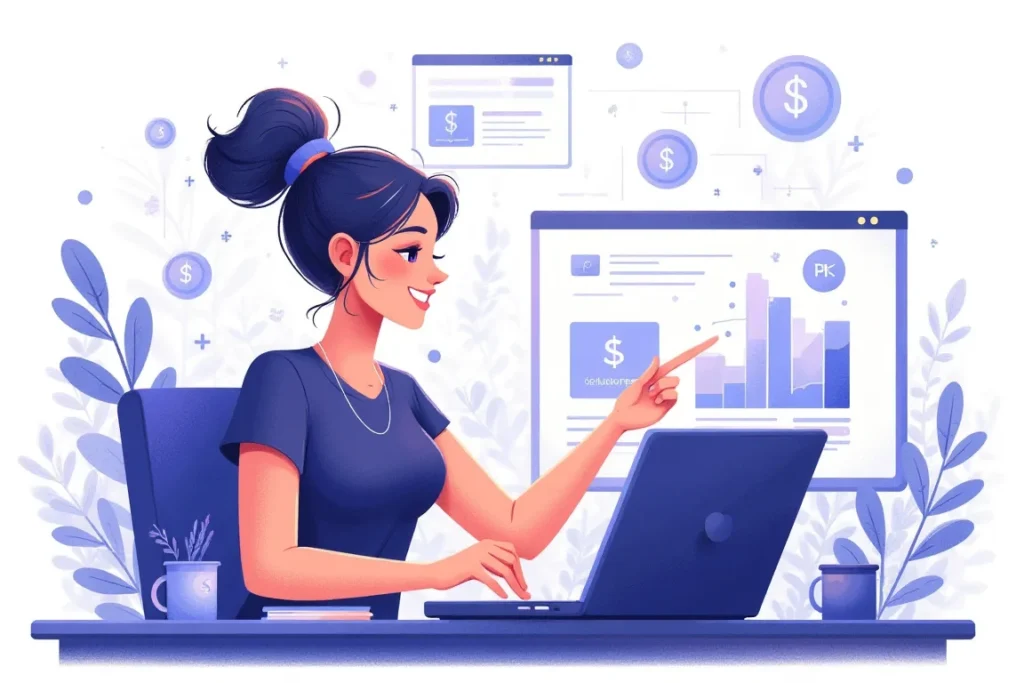Every day, thousands of entrepreneurs discover PLR digital products as their gateway to quick business growth. The concept sounds amazing – buy ready-made content and start selling immediately. But there’s a catch that stops most people in their tracks: the fear of legal issues and uncertainty about customization limits. Understanding exactly how much can I change PLR digital products isn’t just helpful – it’s essential for turning those products into profitable, brand-aligned assets that actually sell.
Key Takeaways
The extent to which you can modify PLR digital products depends entirely on the specific license agreement that comes with each product. Most PLR licenses allow substantial changes, but every seller sets different rules and requirements.
What you can typically change in most PLR products:
- Design elements including colors, fonts, and layout
- Content tone, voice, and messaging to match your brand
- Images, graphics, and visual elements
- Product titles and descriptions
- Adding your logo and branding elements
- Restructuring or reorganizing the content
- Adding new sections or removing existing ones
What varies by license:
- Whether you must make modifications before selling
- How much content needs to be changed (some require 50%+ changes)
- Whether you can sell the product “as is” without modifications
- Distribution methods allowed
- Resale rights and transfer permissions
Essential steps before customizing:
- Read the entire license agreement thoroughly
- Understand the specific dos and don’ts for your product
- Check modification requirements and restrictions
- Verify allowed distribution channels and methods
Looking for PLR products that give you maximum customization freedom? Done for You Digital Products on plrbizhub.com come with flexible licenses that let you transform generic content into profitable, brand-specific products. Skip the guesswork and start building your digital product empire today.
Understanding PLR Customization Rights
What PLR Licenses Actually Allow
Private Label Rights products operate under specific licensing agreements that dictate exactly what modifications you’re permitted to make. Unlike traditional copyrighted content, PLR products are designed to be customized, but the devil’s in the details of each individual license.
The beauty of PLR lies in its flexibility. Most licenses grant you the right to rebrand, edit, and modify the content to make it uniquely yours. This means you can take a generic ebook about productivity and transform it into “The Busy Parent’s Guide to Getting Things Done” with your personal branding, examples, and voice.
However, not all PLR licenses are created equal. Some sellers provide extensive customization rights, allowing you to change everything from the title to the core content. Others might require you to make substantial modifications – sometimes 50% or more – before you can legally sell the product as your own.
The Spectrum of Customization Options
Complete Creative Freedom
Many PLR products come with licenses that give you nearly unlimited customization rights. You can completely rewrite sections, add new chapters, change the entire structure, and even pivot the content to serve a different audience. This type of license is ideal for entrepreneurs who want maximum control over their final product.
Modification Requirements
Some PLR sellers specifically require buyers to make changes before reselling. These licenses often state that you cannot sell the product “as is” and must customize it to avoid market saturation. This requirement actually works in your favor, ensuring that your version stands out from others who purchased the same PLR content.
Restricted Modifications
Certain PLR products come with more limited customization rights. You might be able to change the branding and some content, but core elements must remain intact. These restrictions are usually clearly outlined in the license agreement and are important to respect to avoid legal issues.
Useful Articles:
Design and Visual Customization
Branding Your PLR Products
The visual transformation of PLR products is often the most impactful change you can make. Adding your logo, changing color schemes to match your brand palette, and updating fonts to reflect your brand personality instantly makes the product feel like yours.
Start with the cover design. Replace generic stock images with photos or graphics that resonate with your target audience. If you’re selling to busy professionals, use clean, modern imagery. For creative audiences, consider more artistic or colorful designs. The cover is your customer’s first impression, so make it count.
Typography plays a crucial role in brand recognition. Replace default fonts with ones that align with your brand guidelines. If your brand uses modern, sans-serif fonts, apply those throughout the product. Consistency in typography creates a professional appearance and reinforces brand recognition.
Color psychology shouldn’t be underestimated. Your brand colors evoke specific emotions and associations in your customers’ minds. By incorporating these colors throughout the PLR product, you create a cohesive brand experience that feels intentional and professional.
Layout and Structure Modifications
Don’t overlook the power of restructuring content to better serve your audience. You can reorganize chapters, combine sections, or break large sections into smaller, more digestible pieces. This type of modification often requires no additional content creation but significantly improves user experience.
Consider adding visual elements like infographics, charts, or diagrams to break up text-heavy content. These additions not only make the content more engaging but also demonstrate your commitment to providing value beyond the original PLR product.
Interactive elements can set your customized PLR apart from competitors. Add worksheets, checklists, or reflection questions that encourage active participation. These additions transform passive content consumption into an engaging experience that customers value more highly.
Content Customization Strategies
Voice and Tone Adaptation
One of the most effective ways to make PLR content uniquely yours is by adapting the voice and tone to match your brand personality. If your brand is conversational and friendly, rewrite formal sections to reflect that approachability. Conversely, if you serve a professional B2B audience, you might need to elevate casual language to meet their expectations.
Personal examples and case studies make generic content feel authentic and relatable. Replace hypothetical scenarios with real examples from your industry or experience. This customization not only adds value but also establishes your expertise and credibility in the subject matter.
Cultural and regional adaptation can make PLR content more relevant to your specific audience. If you’re serving a local market, incorporate local references, regulations, or cultural nuances that make the content feel specifically crafted for your customers.
Adding Original Content
Strategic content additions can transform good PLR into exceptional products. Consider adding bonus chapters, supplementary materials, or exclusive resources that weren’t part of the original package. These additions justify higher pricing and create genuine uniqueness.
Current examples and updated statistics breathe new life into PLR content. Many PLR products contain generic or outdated information. By updating facts, figures, and examples with current data, you increase the content’s value and relevance significantly.
Actionable templates and tools turn theoretical content into practical resources. If your PLR ebook discusses marketing strategies, add actual templates, worksheets, or step-by-step guides that readers can implement immediately. These practical additions often become the most valued parts of your product.
Content Restructuring Techniques
The way information is organized and presented significantly impacts user experience. You can take the same PLR content and restructure it to better serve your audience’s learning preferences or use cases.
Module-based organization works particularly well for educational content. Instead of traditional chapters, organize information into focused modules that can be consumed independently. This approach appeals to busy customers who prefer bite-sized learning opportunities.
Progressive difficulty structuring helps customers build confidence and competence gradually. Reorganize content so that basic concepts are thoroughly established before introducing advanced techniques. This approach reduces overwhelm and increases completion rates.
Useful Articles:
Legal Considerations and Boundaries
Understanding License Limitations
Every PLR license includes specific terms that define the boundaries of your customization rights. Some common restrictions include limitations on the type of modifications allowed, requirements for minimum changes, and restrictions on redistribution methods.
Attribution requirements vary significantly among PLR products. Some licenses require you to maintain certain credits or acknowledgments, while others allow complete rebranding. Understanding these requirements upfront prevents legal complications later.
Exclusivity clauses are rare in PLR but worth noting when they exist. Most PLR products are sold to multiple buyers, meaning others will have access to the same base content. However, some premium PLR products offer limited exclusivity or unique licensing terms.
Compliance Best Practices
Documentation of your modifications helps protect you legally and professionally. Keep records of the changes you make, especially for products with specific modification requirements. This documentation can be valuable if questions arise about compliance with license terms.
Regular license review ensures ongoing compliance, especially if you’re purchasing PLR products from multiple sources. Different sellers have different standards and requirements, and keeping track of these variations prevents accidental violations.
Professional legal consultation might be wise for large-scale PLR operations or high-value products. If your business relies heavily on customized PLR content, having a legal professional review your practices and contracts provides additional security.
Advanced Customization Techniques
Multi-Format Adaptation
Transform single-format PLR into multi-format product suites for maximum value extraction. An ebook can become a video course, audio series, and workshop materials, each requiring different types of customization and serving different customer preferences.
Cross-platform optimization ensures your customized PLR performs well across different sales channels and devices. Consider how your modifications will display on mobile devices, tablets, and desktop computers. Responsive design principles apply to digital products just as they do to websites.
Accessibility improvements make your products more inclusive and valuable. Adding alt text to images, ensuring good color contrast, and structuring content with clear headings benefits customers with disabilities while improving overall user experience.
Automation and Efficiency
Batch processing techniques can streamline customization for multiple PLR products. Develop templates and systems for applying your branding elements consistently across different products. This approach maintains brand consistency while reducing time investment per product.
Standardized customization workflows help maintain quality while increasing speed. Create checklists and procedures for each type of customization you commonly perform. This systematization prevents oversight and ensures consistent results.
Tool integration can significantly speed up the customization process. Use design software templates, content management systems, and automation tools to handle routine modifications efficiently, leaving more time for high-value creative customization.
Useful Articles:
Market Positioning Through Customization
Competitive Differentiation
Strategic customization helps position your products distinctly in crowded markets. Rather than making surface-level changes, focus on modifications that address specific pain points or preferences of your target audience that competitors might be overlooking.
Niche-specific adaptation transforms broad PLR content into specialized solutions. A general marketing guide can become “Marketing for Fitness Professionals” or “Marketing for Local Service Businesses” through strategic customization and targeted examples.
Premium positioning through enhancement justifies higher pricing than generic PLR versions. By adding significant value through customization, you can position your products as premium solutions rather than budget alternatives.
Audience-Specific Modifications
Demographic customization ensures your products resonate with specific audience segments. The same productivity content might be customized differently for college students versus working parents versus retirees, each version addressing unique challenges and contexts.
Industry-specific adaptations create highly targeted products from general PLR content. Professional services, retail businesses, online entrepreneurs, and other industries each have unique needs that can be addressed through thoughtful customization.
Skill level differentiation allows you to serve different segments with variations of the same base content. Beginner, intermediate, and advanced versions of the same PLR product can serve different customer needs and price points.
Maximizing ROI Through Strategic Changes
Value-Added Customizations
Focus customization efforts on modifications that genuinely increase customer value rather than just making things different. Additional resources, updated information, and improved organization typically provide more value than cosmetic changes alone.
Complementary product integration creates ecosystem benefits that increase customer lifetime value. Customize PLR products to work together as part of a larger system, encouraging customers to purchase multiple related products.
Exclusive bonuses and extras set your customized PLR apart from competitors using the same base content. These additions don’t require reinventing the entire product but provide clear differentiation and additional value.
Scaling Customization Efforts
Systematic approaches to customization allow you to handle multiple PLR products efficiently while maintaining quality standards. Develop repeatable processes that can be applied across different products and content types.
Team-based customization workflows enable scaling beyond what you can personally handle. Train team members to handle specific aspects of the customization process while maintaining quality and brand consistency.
Quality control systems ensure that increased volume doesn’t compromise the quality of your customized products. Implement review processes and standards that catch issues before products reach customers.
Understanding how much can I change PLR digital products opens up incredible opportunities for building a profitable digital product business without starting from scratch. The key lies in choosing products with flexible licenses, making strategic modifications that serve your audience, and focusing on changes that add genuine value rather than just cosmetic differences.




